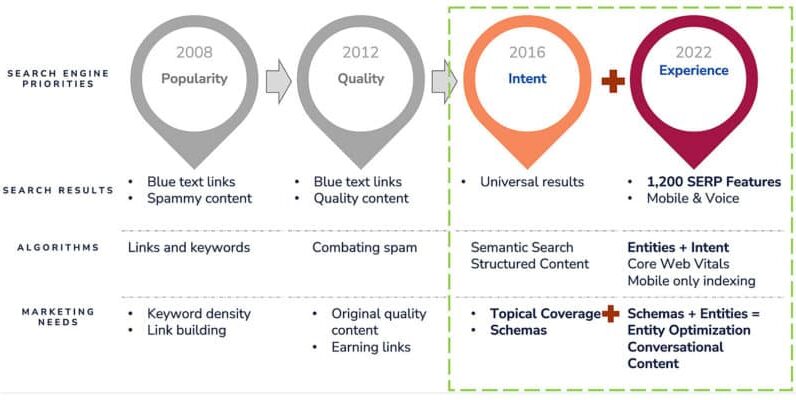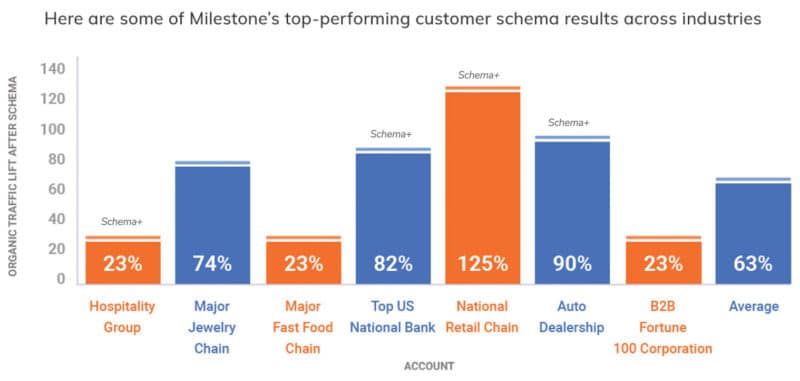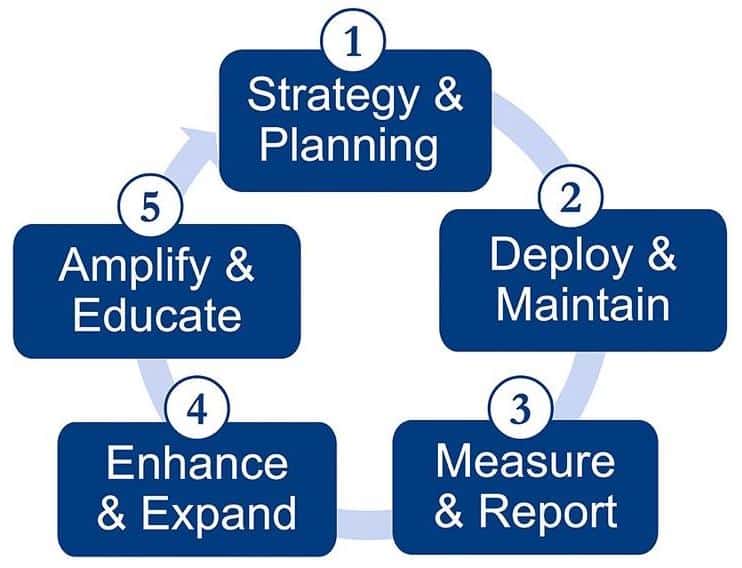
Entity search can be a massive competitive advantage. But first you need to create your entity-based strategy.
This article will explain how to create a solid first entity strategy to help our content and SEO efforts.
The most common challenges that search and content marketers face
Relevant and topical content, discovery based on customer intent remains the biggest challenge we face as search marketers.
Content relevance, in my opinion, means that the content is personalized, it has to tell a story, it has to be scannable, it has to be readable, it has to provide images and the design can be consumed on any device.
Here are five results we want to achieve with the content:
Discovery: Ensure content is discoverable and available across multiple customer touchpoints. relevance: Make sure your content meets all the searchers’ needs, contains all the topics and subtopics a searcher cares about, is easy to read and understand, and tells a story.Measurability: The content is aligned with the overall SEO strategy and is scalable and measurable.Experience: The content provides a great user experience and is scannable.Commitment: It helps drive engagement and guides visitors to desired goals: signups, purchases, form fills, calls, etc.
The most common struggle we face is determining what type of content to create or add.
Alignment of strategies with the search engines
Search engines are evolving, and content marketing strategies must align across all verticals, from popularity and quality to query intent and overall page experience.
Search engine priorities, results, algorithms and needs have evolved over time.
Evolution of search engines and impact
As users search on screenless devices and spoken queries increase, search engines are using artificial intelligence and machine learning to try to replicate how humans think, act and react.
Search engines must decode a long phrase (or paragraph) query and display the best matching results. This is where entities come in.
Entities are things that search engines can understand without language-independent ambiguity. Even when a website has a large amount of content, search engines must understand the context behind it, identify the content entities, make connections between them, and map them to the searcher’s query.
Schema deployment and entity markup in your content gives search engines context and helps them better understand your content.
A convergence of technology and content
Content, where entities are not marked with schemas, tends to perform less well.
In the same way, deploying schemas in content that does not contain all the relevant entities or that does not provide all the information will not have the maximum impact either.
Entity optimization uses advanced nested schemas deployed on content that meets search engine needs and contains all relevant topics and entities.
Let’s use a live project as an example and show what we have achieved for one of our customers.
8 steps to develop a strategy for the entity
We implemented the eight steps below as an entity-first strategy for one of our clients in the healthcare industry to help them gain the best coverage and visibility. We started by identifying the most relevant schema for your industry and then determined gaps in its content for both schema and entities.
 Eight steps to a first entity strategy
Eight steps to a first entity strategy
1. Vocabulary of identified schemes
We have created a list of all schemes applicable to the healthcare sector.
2. Determine the scheme gaps
We identified schema gaps by comparing the site’s current content to applicable schemas.
3. Mapping scheme
Once schema gaps were identified, we identified the most relevant pages to deploy the unused schemas.
4. Market opportunity and potential sizing
We used in-depth keyword research and an analysis of the content’s current performance.
Map content based on informational, navigational and transactional content.
It’s critical to see how your current branded and unbranded content is performing and which should be focused on your business goals.
 Market opportunity and potential sizing
Market opportunity and potential sizing
We’ve identified the pages that could see the greatest impact and potential from theme, entity, and schema optimization.
5. Map the thematic gaps
Once we identified the best potential pages, we bridged the gaps in content by analyzing the topics and entities covered by other ranking websites.
6. Identify content opportunities
We improved the page architecture by adding relevant content elements such as images, headings and lists.
 Page layout showing outline and content opportunities
Page layout showing outline and content opportunities
Topic/entity gaps covered:
care planTreatmentTreatment center ABAT servicesBehavioral technicianAutism spectrum disorderBCBAABA TherapistABA services
Outline gaps covered:
Medical organizationBrowsing siteElementMedical clinic availableServicehasmapFAQItemList
7. Improvement of contents
Optimized content by incorporating missing topics and entities
8. Build better than the best website
We then created the perfect in-depth page, rich with relevant topics that the target audience is searching for.
Strategy of the Impact measurement entity
When we measured the impact of adding entities and schema to our strategy for this healthcare company, we saw a 66% increase in visibility and inclusions in rich results.
 Overall impact of the new page.
Overall impact of the new page.
While the image above is just one example of the impact entities and scheme can have, below you can see how many different industries benefit from the implementation of scheme and entity coverage.
 Impact of the schemes in different sectors.
Impact of the schemes in different sectors.
key points
Creating content is more than just writing. It’s robust when you add all the elements from design, development, subject entity coverage, and outline. All these elements must be aligned to give optimal results.
With organization in mind, group pages of relevant content and connect them through pillar pages, making sure you take advantage of linking opportunities.
Treat each page as a main category page with several relevant pages linked to it. Adding links helps with discoverability and relevance.
Once you have a content strategy for the entity, you need to think about how to scale the process of:
Understanding of the entity. Labeling scheme. Removing broken links or errors as they occur. Continue to add more meaningful content.  Entity optimization frameworks for large enterprise sites
Entity optimization frameworks for large enterprise sites
In my next article, we’ll explore how you can implement, measure and report performance, improve where needed, and scale your entity-first strategy.
The views expressed in this article are those of the guest author and not necessarily Search Engine Land. Staff authors are listed here.
New in Search Engine Land
About the author

Benu Aggarwal, founder and president of Milestone Inc., is a highly recognized expert in digital marketing, voice search, SEO and local solutions. Benu oversees the company’s product development, customer services, technology and strategic vision. Under his leadership, the company has thrived as it launched a suite of SEO software products and thousands of websites, dozens of which won design and technology awards. With his technical marketing expertise, entrepreneurial spirit and motivating attitude, Benu has the ability to translate technical ideas into tangible practices that drive results for clients.
[ad_2]
Source link




